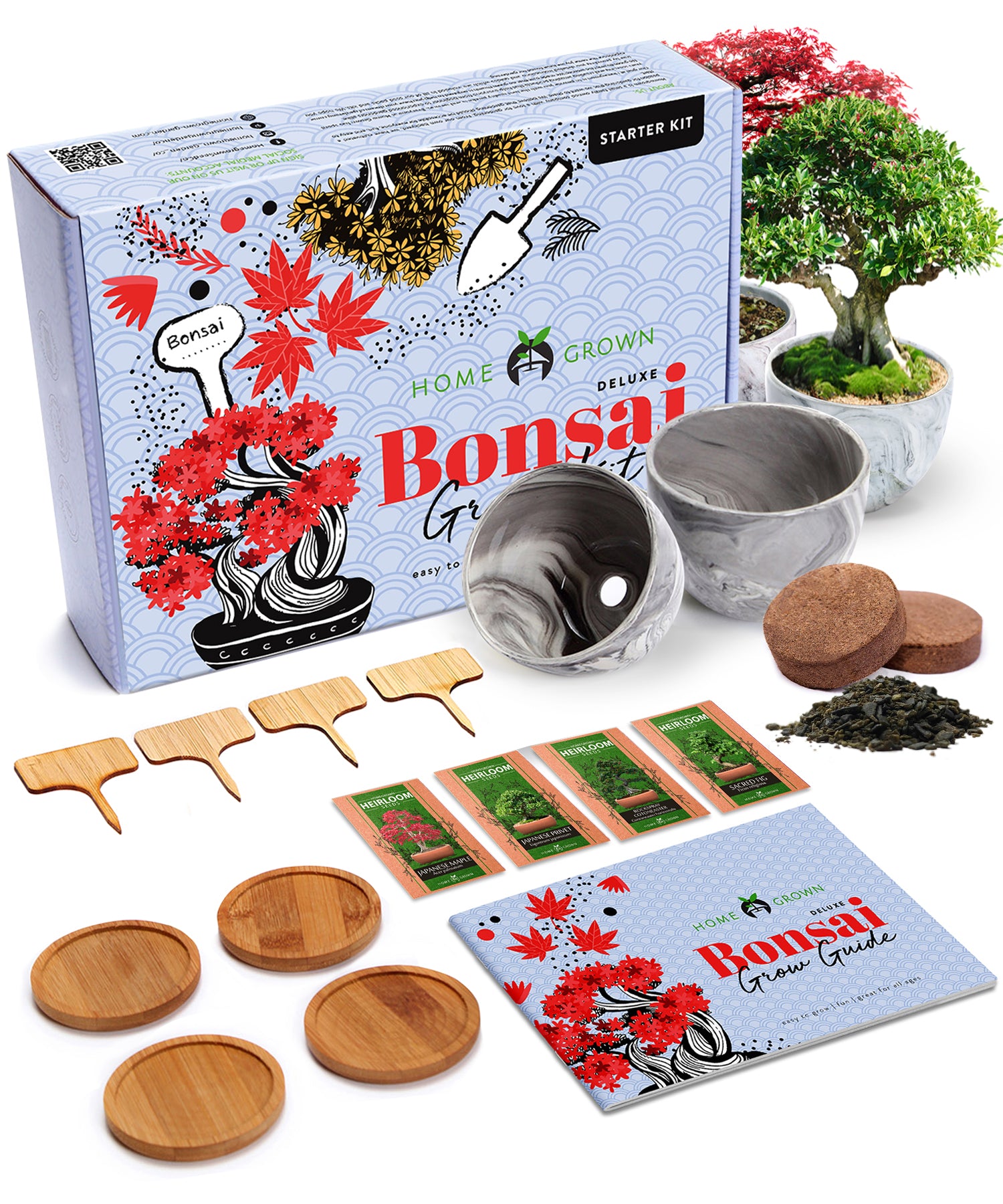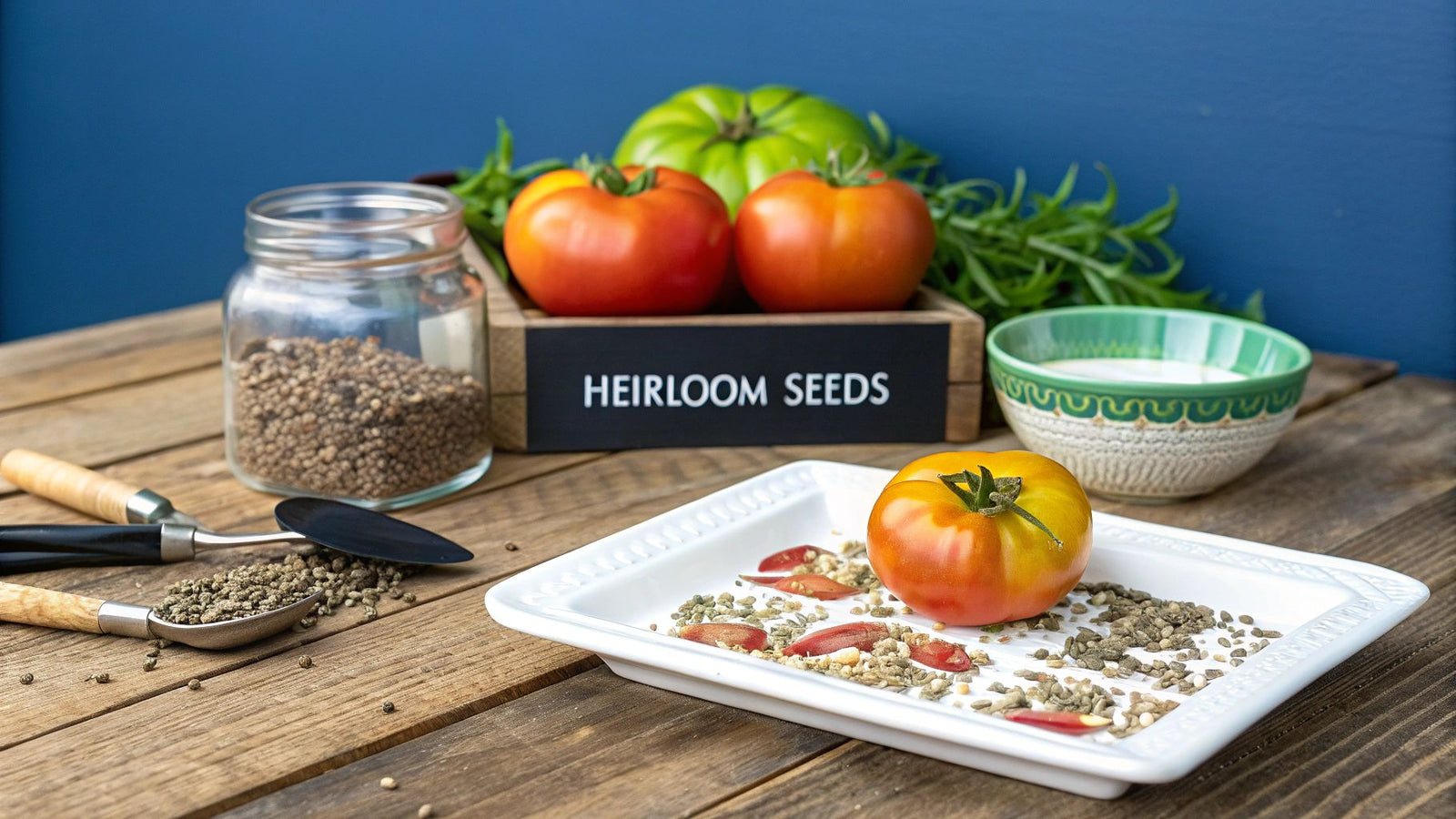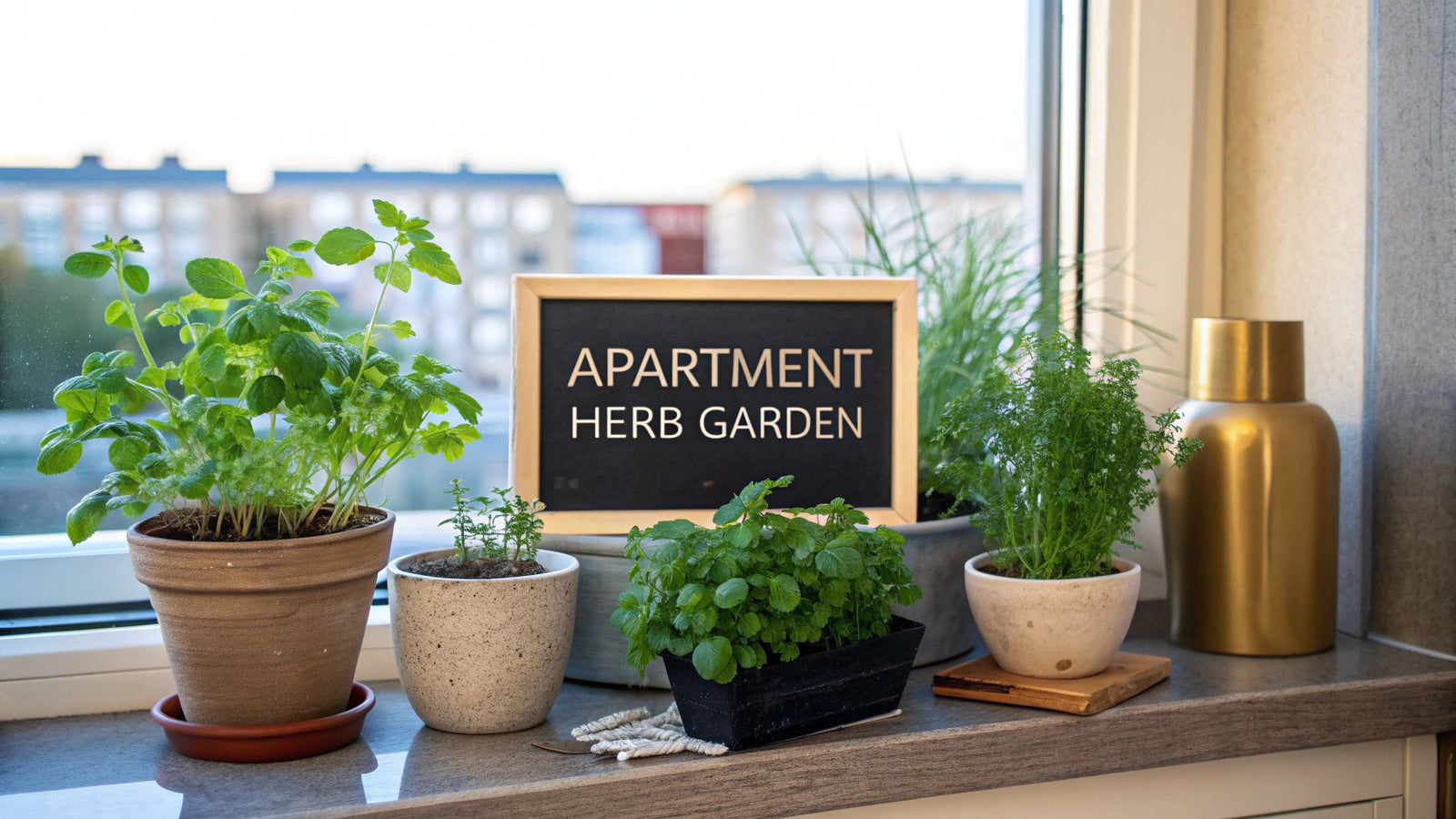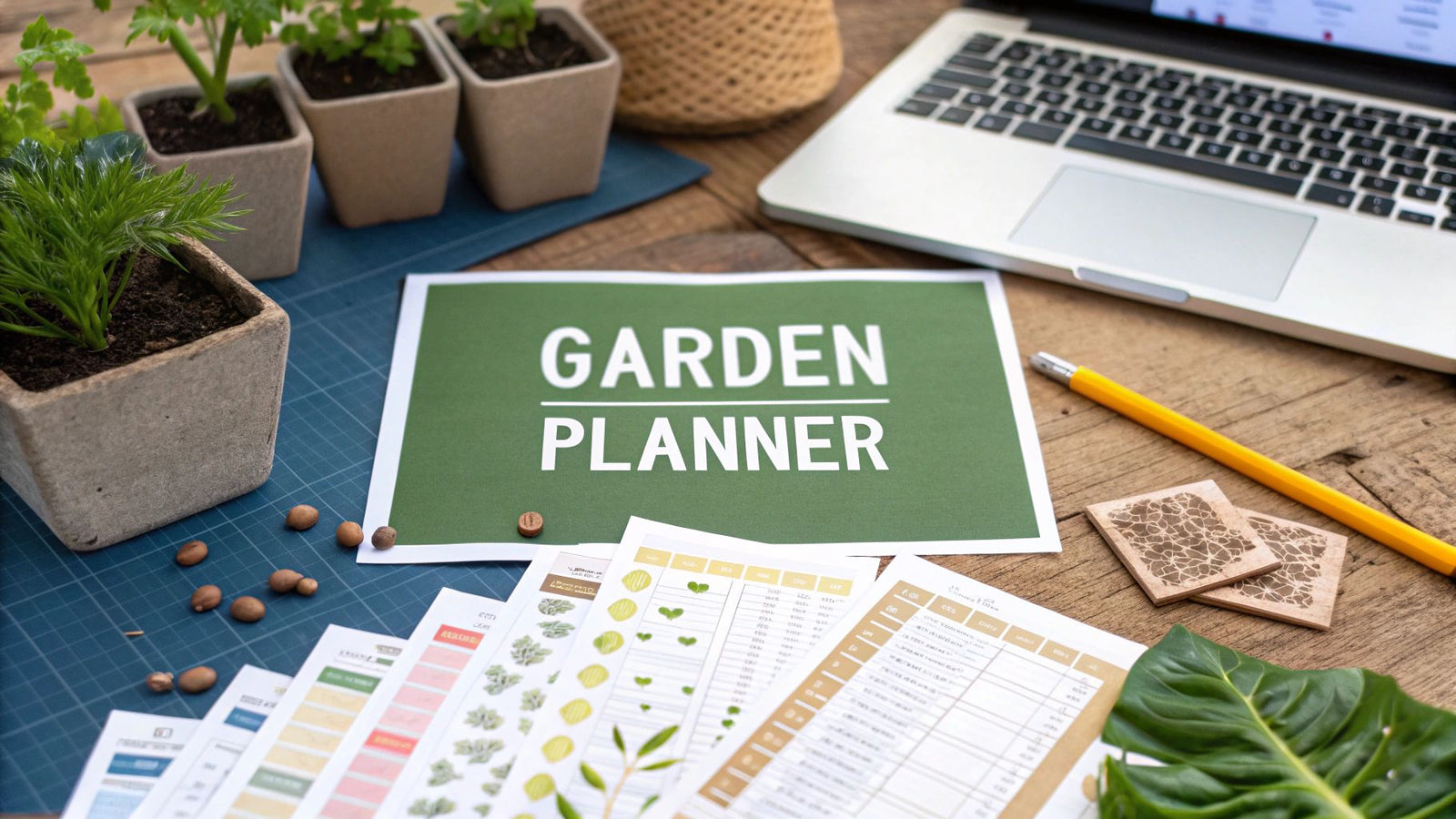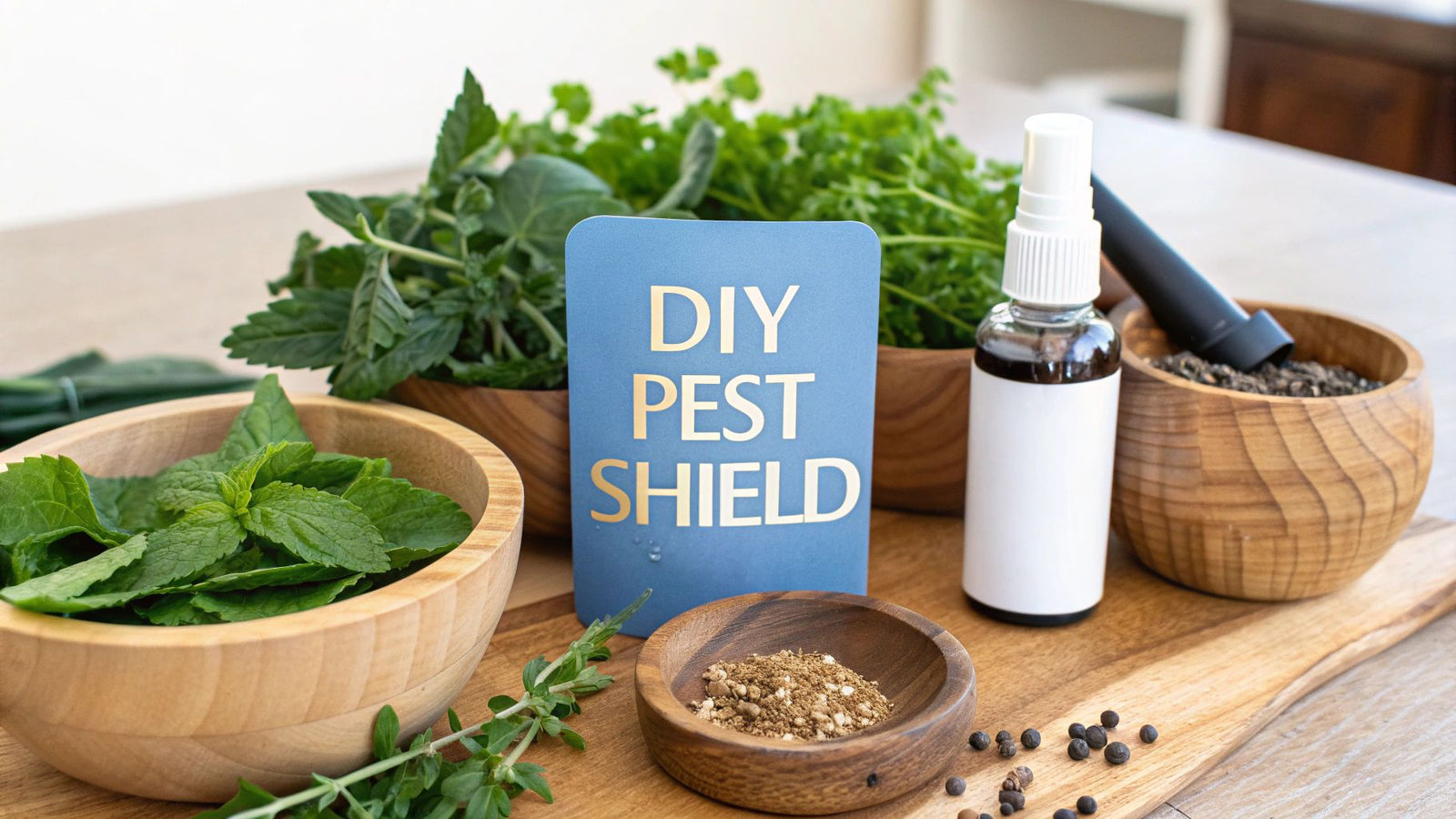
Welcome to the ultimate guide for creating a vibrant, pest-free garden without harsh chemicals. Dealing with garden pests can be frustrating, turning a relaxing hobby into a constant battle. But what if the solution wasn't in a bottle of synthetic pesticides, but right in your kitchen pantry? This article explores the power of homemade garden pest repellent solutions, offering a safe, effective, and sustainable way to protect your plants.
By embracing these DIY methods, you not only save money but also contribute to a healthier environment for your family, pets, and beneficial insects like pollinators. To gain a broader understanding of this philosophy, explore a comprehensive guide on natural pest control methods that complements the specific recipes we'll cover here.
We'll delve into seven tried-and-true recipes and techniques, from powerful sprays to simple barriers, each designed to target specific pests while nurturing your garden's delicate ecosystem. Whether you're a seasoned horticulturist or a beginner tending to your first potted plants, these recipes will empower you to tackle aphids, slugs, fungi, and other common invaders naturally. Get ready to mix, spray, and sprinkle your way to a healthier, more resilient garden.
1. Neem Oil Spray
Derived from the seeds of the Azadirachta indica tree, neem oil is a cornerstone of organic gardening and a highly effective homemade garden pest repellent. Its power lies in its active compound, azadirachtin, which doesn't kill insects on contact. Instead, it works systemically, disrupting their hormonal balance, suppressing their appetite, and inhibiting their ability to grow and reproduce. This multi-pronged attack makes it a formidable, yet natural, solution for managing a wide range of garden pests.
Unlike synthetic pesticides that offer a quick but often harsh knockdown, neem oil provides a more sustainable control method. It’s particularly effective against soft-bodied insects like aphids, spider mites, whiteflies, and mealybugs. Because it must be ingested to be effective, it is generally safe for beneficial pollinators like bees and ladybugs, which do not feed on plant leaves.
How to Prepare and Use Neem Oil Spray
Creating your own neem oil spray is simple and cost-effective. The key is ensuring the oil emulsifies, or mixes properly with water, so it can be sprayed evenly onto your plants.
-
Ingredients:
- 1 gallon of warm water
- 1-2 teaspoons of high-quality, cold-pressed neem oil (look for products with a high azadirachtin concentration)
- 1/2 teaspoon of mild liquid dish soap or insecticidal soap (as an emulsifier)
-
Preparation & Application:
- Combine the warm water and liquid soap in a garden sprayer and mix thoroughly.
- Slowly add the neem oil while agitating the mixture to ensure it is fully emulsified.
- Spray all plant surfaces, including the undersides of leaves where pests often hide.
- Apply in the early morning or late evening. Direct sunlight on wet, oil-coated leaves can cause them to burn.
- Reapply every 7-14 days as a preventative measure or every 5-7 days to control an active infestation. Always reapply after rainfall.
Pro Tip: Before treating an entire plant, always perform a patch test. Apply the spray to a small, inconspicuous area and wait 24-48 hours to check for any signs of leaf yellowing, spotting, or other adverse reactions. This is crucial for sensitive plants like ferns and some flowering species.
The following graphic summarizes the core benefits that make neem oil a gardener's essential ally.
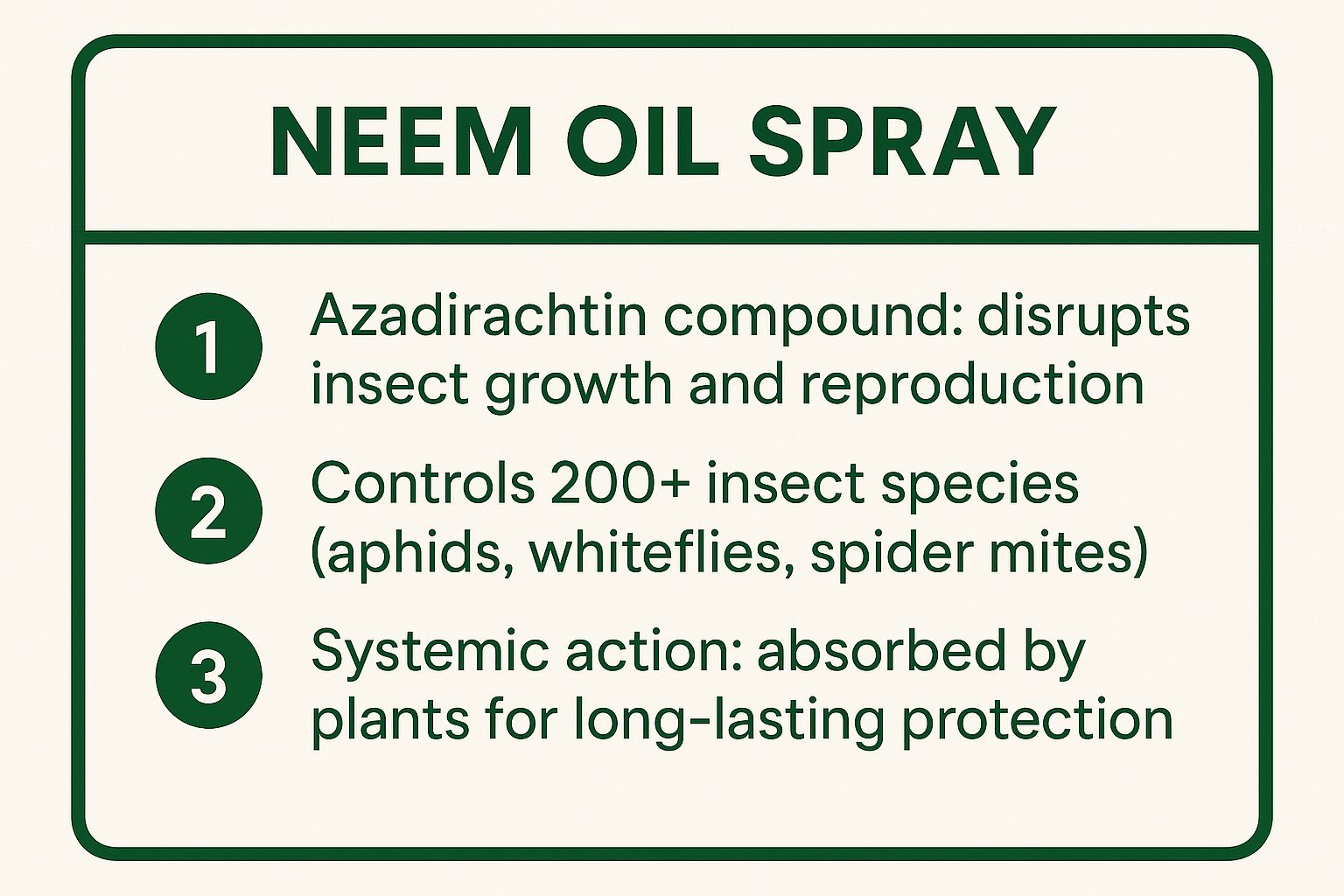
As the data shows, neem oil's ability to disrupt insect growth, control a vast number of species, and provide lasting protection makes it one of the most versatile tools in an organic gardener's arsenal. This makes it an indispensable homemade garden pest repellent for everything from vegetable patches to ornamental rose gardens.
2. Diatomaceous Earth (Food Grade)
A powerful yet entirely mechanical homemade garden pest repellent, diatomaceous earth (DE) is not a spray but a fine powder with a fascinating origin. It consists of the fossilized remains of tiny aquatic organisms called diatoms. Under a microscope, these particles reveal razor-sharp edges that are lethal to soft-bodied, exoskeleton-bearing insects. When pests like slugs, ants, or beetles crawl over the powder, it pierces their protective outer layer, causing them to dehydrate and die.
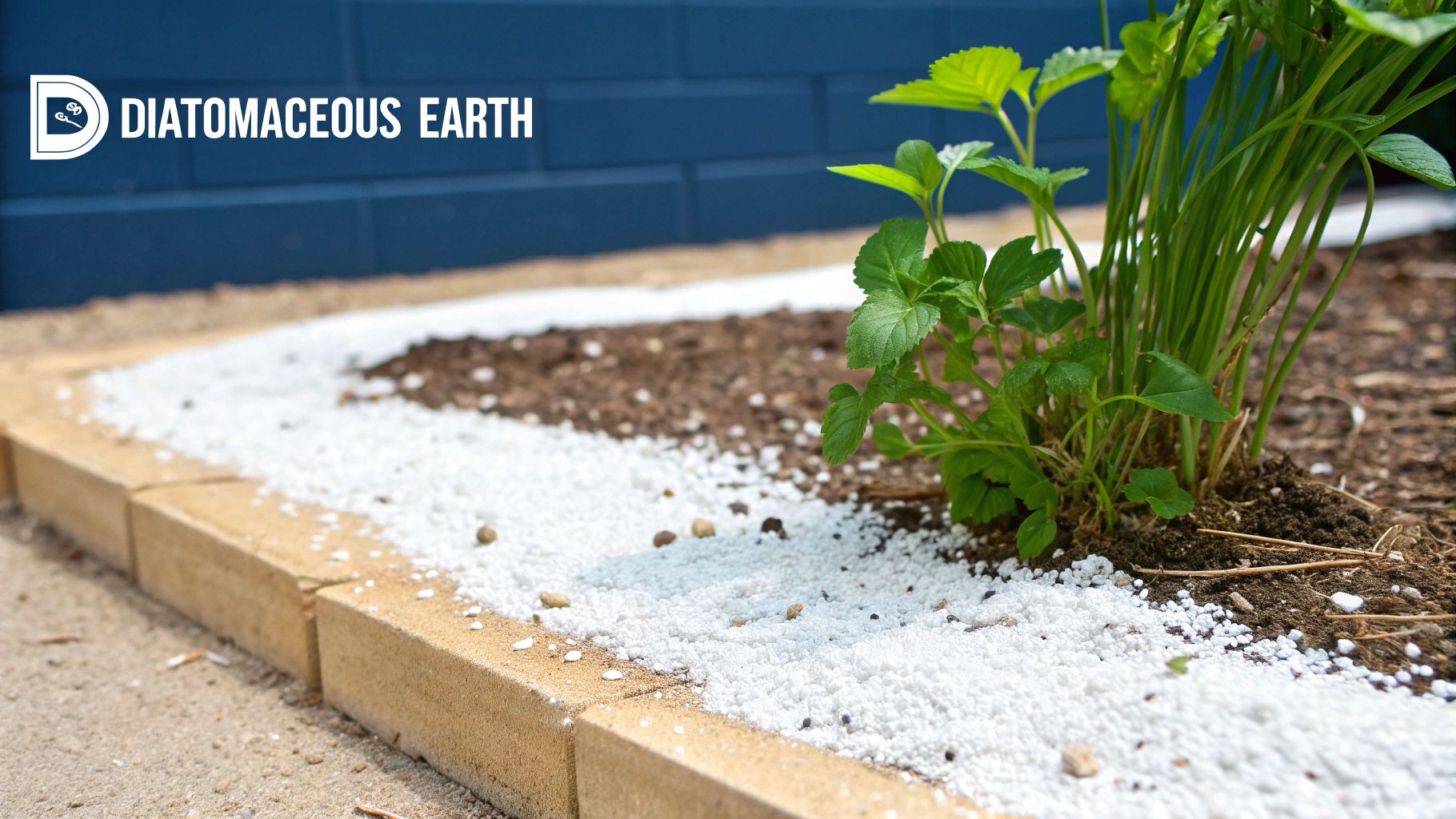
Unlike chemical pesticides that rely on poison, DE works through physical action, meaning pests cannot develop a resistance to it. This makes it a sustainable and reliable tool, particularly for controlling ground-dwelling pests. It is highly effective against slugs, snails, ants, earwigs, silverfish, and cucumber beetles. Since it is not a poison, it is safe for the soil, plants, and earthworms when used correctly.
How to Prepare and Use Diatomaceous Earth
Application is key with diatomaceous earth. It must be dry to work effectively, and a light, targeted dusting is far more successful than a thick, clumpy layer.
-
Ingredients & Tools:
- Food-grade diatomaceous earth (essential to avoid harmful additives found in pool-grade DE)
- A powder duster, empty spice shaker, or fine-mesh sifter for application
- A dust mask and protective eyewear
-
Preparation & Application:
- Ensure plants and soil are dry before application, as moisture renders DE ineffective.
- Wearing a dust mask to avoid inhalation, fill your applicator with food-grade DE.
- Apply a light, even dusting directly onto the soil around the base of vulnerable plants, creating a protective barrier.
- You can also lightly dust plant foliage to target pests like aphids and beetles, but focus on areas where you see pest activity.
- Reapply after rain or heavy morning dew, as water washes it away or clumps it, neutralizing its sharp structure.
Pro Tip: For targeted control of ant trails, apply a thin line of DE directly across their path. The ants will not cross the barrier. For slugs and snails that ravage seedlings, a complete circle of DE around each plant or the entire garden bed is an exceptionally effective deterrent.
3. Soap Spray Solution
One of the most accessible and widely-used homemade garden pest repellent methods, a simple soap spray solution is remarkably effective. Its power lies in its direct mechanism of action. The fatty acids in the soap dissolve the waxy outer layer, or cuticle, of soft-bodied insects, which leads to dehydration and death. It works purely on contact and does not have any residual systemic effects on the plant.
Unlike potent chemical insecticides, a soap spray solution is a very gentle, first-line treatment for common pest problems. It is particularly effective against aphids, mealybugs, whiteflies, thrips, and spider mites. Because it must directly coat the pest to work, it poses minimal risk to beneficial insects like bees and ladybugs that are not on the plant at the time of application. This makes it an essential tool for targeted pest control in an organic garden.
How to Prepare and Use Soap Spray Solution
Creating this foundational homemade garden pest repellent takes only a minute and uses common household items. The most critical factor is using a pure soap without degreasers, moisturizers, or synthetic detergents, which can harm plants.
-
Ingredients:
- 1 gallon of water (preferably soft or distilled water to prevent soap scum)
- 1-2 teaspoons of mild liquid soap (Castile soap or a non-detergent dish soap is ideal)
-
Preparation & Application:
- Combine the water and liquid soap in a garden sprayer. Gently mix to avoid creating excessive foam.
- Spray all affected plant surfaces thoroughly, paying close attention to the undersides of leaves and stem joints where pests congregate.
- Apply in the cool of the early morning or late evening. This prevents the spray from evaporating too quickly and reduces the risk of leaf burn from the sun.
- Since soap spray only works when wet, reapply every 4-7 days to manage an active infestation until the pests are gone. This is a crucial step for controlling pests like aphids on tomato plants. You can find more details in our guide about how to get rid of common tomato pests on homegrown-garden.com.
Pro Tip: Not all plants are tolerant to soap sprays. Always perform a patch test on a single leaf and wait 24-48 hours to check for signs of damage like spotting or yellowing before spraying the entire plant. Sensitive plants like gardenias, sweet peas, and certain ferns may show signs of phytotoxicity.
4. Garlic and Chili Pepper Spray
Harnessing the pungent power of common kitchen ingredients, this homemade garden pest repellent is a potent deterrent for a wide range of unwanted visitors. Its effectiveness comes from two key components: the sulfur compounds in garlic, which create a strong, offensive odor, and capsaicin from hot peppers, which irritates insects and small mammals upon contact or taste. This spray doesn't typically kill pests but makes your plants so unappealing that they are forced to look elsewhere for a meal.
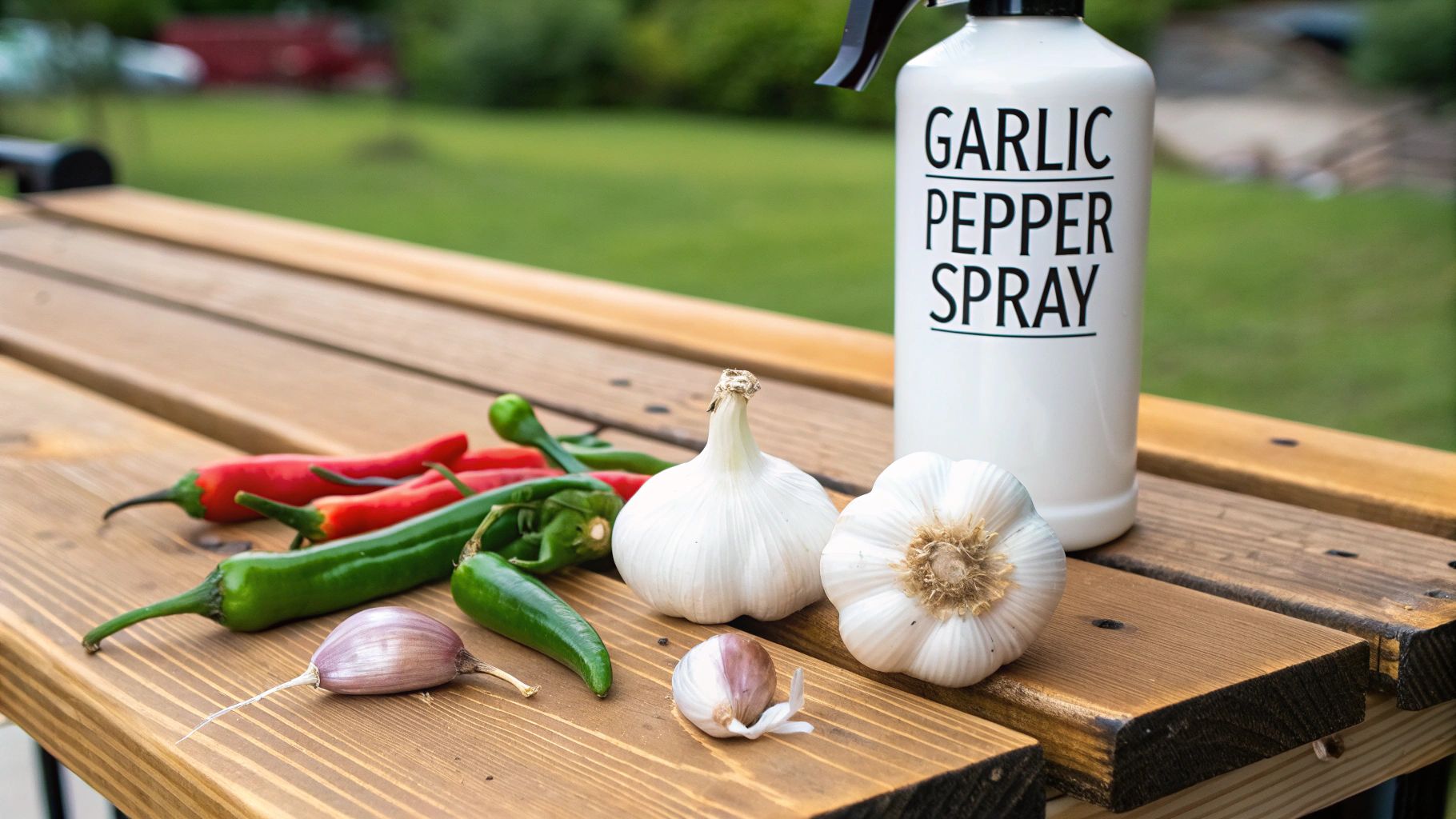
Unlike targeted insecticides, this all-purpose repellent works on both insects and larger animals. It's particularly effective against aphids, beetles, and spider mites, while also discouraging rabbits, deer, and squirrels from nibbling on foliage and bulbs. Because it relies on scent and taste aversion, it’s a great choice for protecting valuable crops without introducing harsh chemicals into your garden ecosystem. Many organic farmers rely on this method to protect crops in a natural, sustainable way.
How to Prepare and Use Garlic and Chili Pepper Spray
Creating this powerful repellent is straightforward, but care should be taken during preparation to avoid skin and eye irritation from the chili peppers.
-
Ingredients:
- 1 gallon of water
- 2-3 whole bulbs of garlic (not just cloves)
- 10-12 hot peppers (like habaneros or cayenne), or 2-3 tablespoons of hot pepper flakes
- 1 teaspoon of mild liquid dish soap
-
Preparation & Application:
- Combine the garlic (peeled cloves) and hot peppers in a blender with 2 cups of water. Blend until you have a smooth, potent slurry.
- Pour the mixture into a large container, add the remaining water, and let it steep overnight, or for at least 12 hours, to infuse.
- Strain the liquid through several layers of cheesecloth or a fine-mesh sieve to remove all solid particles, which could clog your sprayer.
- Add the dish soap to the strained liquid and mix gently. Transfer the final repellent to your garden sprayer.
- Thoroughly coat your plants, focusing on new growth and the undersides of leaves. Apply in the early morning or evening to prevent leaf scorch.
- Reapply every 7-10 days and always after a heavy rain to maintain its deterrent effect.
Pro Tip: Always wear gloves and eye protection when preparing and spraying this mixture. The capsaicin is potent and can cause significant irritation. Test the spray on a small section of a plant first to ensure it doesn't cause any damage, especially on delicate seedlings.
The dual-action nature of this spray, repelling both insects and mammals, makes it an invaluable homemade garden pest repellent. For a continuous supply, consider growing your own ingredients. Learn more about growing garlic in your garden to have a ready source for this and other powerful garden remedies.
5. Coffee Grounds Barrier
Transforming a daily ritual into a garden asset, used coffee grounds serve as an excellent homemade garden pest repellent. This zero-waste solution creates both a physical and chemical barrier that deters common garden invaders. The abrasive texture of the grounds is unpleasant for soft-bodied pests like slugs and snails to crawl over, while the residual caffeine and acidity act as natural deterrents for ants and other insects.
Beyond pest control, this method enriches your garden by adding valuable organic matter and nitrogen to the soil as the grounds decompose. It’s a popular technique in organic vegetable gardens, often used around the base of tomatoes and peppers. Many hosta growers also rely on a ring of coffee grounds to protect their plants' broad leaves from being devoured by slugs. This sustainable practice has been widely embraced, even leading to programs like Starbucks' "Grounds for Your Garden," which offers used grounds to gardeners for free.
How to Prepare and Use a Coffee Grounds Barrier
Effectively using coffee grounds requires a bit more than just dumping your morning brew's remnants into the garden. Proper application prevents mold and ensures you reap the benefits without harming your plants.
-
Ingredients:
- Used, dried coffee grounds (fresh grounds are too acidic)
- Optional: Compost or other organic mulch
-
Preparation & Application:
- Spread your used coffee grounds on a tray to dry completely. This prevents them from clumping and molding.
- Sprinkle a thin layer, about half an inch deep, in a circle around the base of the plants you want to protect. Avoid piling the grounds directly against the plant stems, as this can trap moisture and cause rot.
- For broader soil improvement, you can lightly mix the dried grounds into the top inch of your soil or combine them with compost.
- Reapply the barrier every few weeks, especially after heavy rain, as the grounds will wash away or decompose into the soil.
Pro Tip: While coffee grounds are only slightly acidic, extensive use can alter your soil's pH over time. It's a good practice to test your soil's pH periodically, especially if you are applying grounds heavily or growing acid-sensitive plants. This ensures your homemade garden pest repellent doesn't inadvertently create another problem.
6. Companion Planting with Marigolds
Companion planting is an age-old gardening strategy that uses the natural properties of plants to benefit each other, and marigolds (Tagetes species) are superstars in this role. More than just a cheerful addition, these flowers serve as a powerful, living homemade garden pest repellent. Their distinct, pungent scent is known to deter a variety of above-ground pests, including tomato hornworms, squash bugs, and even rabbits who find the odor offensive.
The real magic of marigolds, however, happens below the soil. Their roots release a chemical called alpha-terthienyl, which is highly toxic to root-knot nematodes, microscopic roundworms that can cause devastating damage to the root systems of many vegetables. This makes marigolds a proactive, integrated pest management solution that enhances garden health and biodiversity while reducing the need for chemical sprays. They are particularly beneficial for protecting tomatoes, roses, and root vegetables.
How to Implement Companion Planting with Marigolds
Strategically placing marigolds throughout your garden is key to maximizing their pest-repelling benefits. Unlike a spray, this is a preventative measure you establish at the start of the season.
-
Best Varieties:
- French Marigolds (Tagetes patula): Highly effective against nematodes and many crawling insects. Their compact size makes them ideal for interplanting.
- African Marigolds (Tagetes erecta): Taller varieties like the 'Crackerjack' mix create a formidable scented barrier around garden perimeters. You can learn more about growing these impressive flowers in our Crackerjack Marigold Grow Guide.
-
Planting & Maintenance:
- Integrate marigolds directly into your vegetable beds, planting them between tomato, pepper, and squash plants.
- For nematode control, plant a dense cover crop of French marigolds in an infested bed for a full season before planting vegetables.
- Create a protective border around the entire garden perimeter to deter pests like rabbits and deer.
- Space plants about 12-18 inches apart to ensure their scents and root secretions create an effective, overlapping barrier.
- Deadhead spent blooms regularly. This encourages the plant to produce more flowers, maintaining the strong scent needed for pest control throughout the growing season.
Pro Tip: For the most potent pest-deterring effect, choose the most aromatic marigold varieties you can find. Gently crush a leaf at the nursery; the stronger the scent, the better it will work as a repellent. While hybrids are beautiful, older, heirloom varieties often retain a more pungent, effective odor.
7. Baking Soda Fungicide Spray
Often found in kitchen pantries, simple baking soda (sodium bicarbonate) doubles as a surprisingly effective homemade garden pest repellent and fungicide. Its power comes from its ability to alter the pH level on plant leaf surfaces. This creates a highly alkaline environment that is inhospitable to fungal spores, preventing them from germinating and spreading diseases like powdery mildew, black spot, and rust.
While not a direct insecticide in the traditional sense, this altered pH can also deter certain soft-bodied insects that prefer a more neutral environment. It's a preventative measure rather than a knockdown cure, making it an excellent component of an integrated pest management strategy. Its gentle, non-toxic nature makes it a favorite among rose societies for preventing black spot and for organic cucumber growers battling persistent powdery mildew.
How to Prepare and Use Baking Soda Fungicide Spray
Creating this preventative spray is incredibly simple and uses common household ingredients. The addition of oil helps the solution adhere to leaves for longer-lasting protection.
-
Ingredients:
- 1 gallon of water
- 1 tablespoon of baking soda
- 1/2 teaspoon of mild liquid dish soap or horticultural oil (as a sticker/spreader)
-
Preparation & Application:
- In a garden sprayer, combine the water and baking soda, and stir or shake until the powder is fully dissolved.
- Add the liquid soap or horticultural oil and mix again to combine. The soap acts as a surfactant, helping the solution stick to the leaves.
- Thoroughly spray all plant surfaces, making sure to cover the undersides of leaves where fungal issues often begin.
- Apply in the early morning or late evening. Spraying in the intense midday sun can increase the risk of leaf scorch.
- Reapply every 7-14 days, especially during humid or damp weather conditions that favor fungal growth. Be sure to reapply after it rains.
Pro Tip: Consistency is key when using baking soda spray. Begin applications early in the growing season before you see signs of disease. This preventative approach is far more effective than trying to treat a well-established fungal infection. While generally safe, avoid over-applying, as a buildup of sodium in the soil can be harmful over time.
Homemade Garden Pest Repellent Comparison
| Item | Implementation Complexity 🔄 | Resource Requirements ⚡ | Expected Outcomes 📊 | Ideal Use Cases 💡 | Key Advantages ⭐ |
|---|---|---|---|---|---|
| Neem Oil Spray | Moderate – requires mixing, repeated applications | Moderate – neem oil, water, mild soap | Broad-spectrum insect control, fungicidal effect | Organic gardens needing wide pest and fungal control | Systemic action, effective on 200+ pests, safe when used properly |
| Diatomaceous Earth | Low – simple dusting but careful application needed | Low – food-grade powder, dust mask recommended | Long-lasting physical insect barrier (dry conditions) | Dry conditions, crawling pest control | Chemical-free, long-lasting if dry, controls crawling insects |
| Soap Spray Solution | Low – easy mixing, frequent reapplication | Very low – mild liquid soap and water | Immediate soft-bodied pest knockdown | Quick treatment of aphids and soft-bodied pests | Cost-effective, safe, biodegradable |
| Garlic and Chili Pepper Spray | Moderate – requires preparation and straining | Low – common kitchen ingredients | Repels insects and mammals via smell and taste | Repelling mammals and insects, organic deterrent | Dual-action (insects+mammals), long-lasting deterrent |
| Coffee Grounds Barrier | Low – simple application around plants | Very low – used coffee grounds | Physical and chemical barrier, soil enrichment | Deterring slugs, snails, some ants | Recycles waste, improves soil, safe for pets |
| Companion Planting with Marigolds | Moderate – planning and planting needed | Low – marigold seeds/plants | Natural pest repellent, nematode suppression | Integrated pest management and garden aesthetics | Attracts beneficial insects, sustainable, nematode control |
| Baking Soda Fungicide Spray | Low – easy mixing, consistent application needed | Very low – baking soda, water, oil | Prevents fungal diseases and deters soft insects | Fungal disease prevention (powdery mildew, black spot) | Non-toxic, fungicidal and pest deterrent dual effect |
Your Next Steps to a Thriving, Pest-Free Garden
You've now explored a comprehensive toolkit of effective, natural, and easy-to-create homemade garden pest repellent solutions. From the insect-disrupting power of Neem Oil Spray to the simple yet effective barrier of Coffee Grounds, these methods empower you to protect your plants without resorting to harsh synthetic chemicals. We have covered a spectrum of approaches, addressing everything from soft-bodied aphids with a basic Soap Spray Solution to deterring larger pests with a potent Garlic and Chili Pepper Spray.
The journey to a healthy garden is one of proactive care, not just reactive treatment. Mastering these DIY recipes is a significant step, but integrating them into a broader garden management strategy is where true success lies. Remember the value of prevention through Companion Planting with marigolds and tackling fungal issues early with a Baking Soda Fungicide Spray. Each strategy offers a unique mechanism for pest control, highlighting the importance of correct pest identification before application.
Key Takeaways for Lasting Success
The most crucial takeaway is that organic pest management is a dynamic process. There is no single "magic bullet" solution. Instead, success is built on observation, consistency, and a willingness to adapt your approach.
- Observation is Your Best Tool: Regularly inspect your plants, paying close attention to the undersides of leaves and new growth. Early detection makes any pest problem significantly easier to manage.
- Consistency is Crucial: A single application of a homemade garden pest repellent is rarely enough. Plan to reapply your chosen solution every 7-10 days, and always after a heavy rainfall, to maintain its effectiveness.
- Holistic Health is the Goal: A strong, healthy plant is naturally more resistant to pests and diseases. Focus on building healthy soil, ensuring proper watering, and providing adequate sunlight. These foundational elements are your garden's primary defense system.
Your Action Plan for a Pest-Free Garden
Transforming this knowledge into action is your next step. Don't feel overwhelmed by the options; start small and build from there.
- Identify Your Primary Pest: Before mixing any spray, determine what is actually eating your plants. Is it aphids, spider mites, slugs, or something else? A quick search online or in a gardening book can help you pinpoint the culprit.
- Choose Your Starting Recipe: Select one or two repellents from this guide that are best suited for your identified pest. For a general-purpose start, the Neem Oil Spray is an excellent, versatile choice.
- Patch Test First: Always test your homemade spray on a small, inconspicuous part of the plant first. Wait 24-48 hours to ensure there is no adverse reaction, such as leaf burn, before applying it more broadly.
- Integrate and Rotate: Don't rely on just one method. Combine a spray with a physical barrier like Diatomaceous Earth or companion planting. Rotating between different sprays can also prevent pests from developing a tolerance.
By embracing these homemade garden pest repellent strategies, you are doing more than just protecting your harvest. You are fostering a balanced ecosystem, supporting beneficial insects, and creating a safer environment for your family and pets. You are becoming a more intuitive and resourceful gardener, one who works in harmony with nature to cultivate a thriving, resilient, and beautiful garden.
Ready to cultivate a garden that's not only pest-free but also flourishing with life? The foundation of a strong plant starts with a quality seed. At Homegrown Garden, we provide premium heirloom and organic seeds that grow into vigorous, resilient plants better equipped to naturally fend off pests. Explore our collection at Homegrown Garden and give your garden the strongest possible start.

